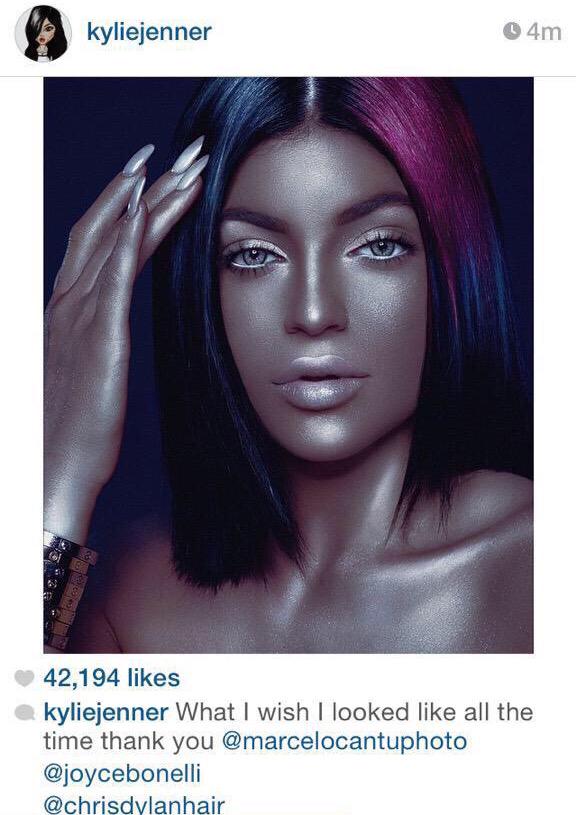The social media site Twitter allows for thousands to quickly share 140 character posts known as "tweets." For one tweeter, Justine Sacco, after posting several outrageous Twitter updates, she finally realized the weight that words on social media hold. While the tweet she's most publicly known for sparked outrage for seemingly glorifying white privilege, I feel it necessary to share some of her other outrageous tweets to give you all a better sense of her character, courtesy of BuzzFeed.
1. The tweet that started it all:
Going to Africa. Hope I don’t get AIDS. Just kidding. I’m white!
— Justine Sacco (@JustineSacco) December 20, 2013
2.
@realestSmiller Stoler says hi. We’re not into rubbing fish unless it’s masturbation— Justine Sacco (@JustineSacco) October 1, 2011
3.
As I sit and eat a bagel with lox, i would like to send love to my jews who are all starving themselves right now. #hungryhungryhebrews— Justine Sacco (@JustineSacco) October 8, 2011
4.
I don’t understand why this ugly chick from England has become such an inspiration.— Justine Sacco (@JustineSacco) April 18, 2009
5.
Someone get the rape kit ready for Tom Brady. Go Giants! #SuperBowl— Justine Sacco (@JustineSacco) February 5, 2012
6.
why is kelly osbourne giving fashion advice at the #Oscars? #notqualified #everyoneontelevisionisretarded— Justine Sacco (@JustineSacco) February 26, 2012
8.
In #NY, crazy men say “marry me gorgeous.” In #London they say “you filthy cunts” cc: @kzarem@Leigh_Barratt— Justine Sacco (@JustineSacco) December 4, 2012
10.
I can’t be fired for things I say while intoxicated right?— Justine Sacco (@JustineSacco) January 30, 2013
11.
Just thanked Gov Cuomo for supporting #womensrights. Need to stop geeking out over politicians that love abortions. Cc: @Steinand2— Justine Sacco (@JustineSacco) June 7, 2013
12.
Thanks @GMA for the @okcupid segment. Might have to change my body type to “used up” also. http://t.co/lvX63ILPKs— Justine Sacco (@JustineSacco) October 2, 2013
13.
I just feel like @jimmyfallon would be such a grateful lover— Justine Sacco (@JustineSacco) October 3, 2013
14.
Similar to Luda, I also have hoes in different area codes. #cannes #london— Justine Sacco (@JustineSacco) October 7, 2013
15.
“Weird German Dude: You’re in first class. It’s 2014. Get some
deodorant.” -Inner monologue as I inhale BO. Thank god for
pharmaceuticals.— Justine Sacco (@JustineSacco) December 20, 2013
16. And the award for classiest tweet of all time goes to…
I had a sex dream about an autistic kid last night. #fml— Justine Sacco (@JustineSacco) February 24, 2012
Here is the link to the quotes on BuzzFeed if you'd like to check out more of their posts:
The post we will be focusing on for the purpose of the post is the blog post about white people not getting AIDS. While some of the tweets mentioned above don't come off as offensively as this one, some seem downright ignorant. I personally feel that Justine probably intended to come off in a more satirical way, which as mentioned before is diminishing a subject by making it sound ridiculous and trying to evoke attitudes of amusement, contempt, scorn, or indignation. Unfortunately, the only one who was left feeling scorned was Sacco herself.
A New York Times article posted by Jon Ronson that I've just recently read primarily discusses Sacco's posts while traveling to South Africa and the backlash she received that costed her not only her job, but her life as she knew it. People responded by tweeting messages such as:
“We are about to watch this @JustineSacco bitch get fired. In REAL time. Before she even KNOWS she’s getting fired,"
And
“How did @JustineSacco get a PR job?! Her level of racist ignorance belongs on Fox News. #AIDS can affect anyone!”
In the article, Ronson interviews Sacco a couple times following the post that made her Twitter famous. Having previously been a perpetrator of people that posted highly disliked posts himself, Ronson had a change of heart and seemed to defend Sacco's position in the name of removing internet bullying. I think it's important to note first that I whole-heartedly disagree with publicly humiliated others. Justine herself suffered from PTSD, depression, and anxiety following public backlash from her post. However, I do feel that that shouldn't mean that people such as Justine should get entirely let off the hook.
For example, Alicia Ann Lynch, a woman that Sacco identified her experience with, was publicly bashed for tweeting this photo of her Halloween costume as a Boston marathon runner:
Photos and posts such as these ones posted by Lynch and Sacco are incredibly offensive. Obviously in the case of the Halloween costume, people that have a personal connection with the tragedy may be hurt or highly offended by the "joke." Ronson's article seems to let Sacco off the hook a bit too easily, claiming that she is guilty of making poorly thought-through jokes. However, a good question to ask before posting something on social media should be: is there any way that this would be perceived as offensive or hurtful? If so, I highly disagree with being able to pass it off as a joke. With social media being a public platform where boundaries are more easily pushed, I feel that it is important to educate yourself on an issue before posting about it in a way that may draw the wrong type of attention. And while I disagree with publicly shaming someone such as the cases of Alicia Lynch and Justine Sacco, I feel that it is necessary to respectful share some education in order to minimize social media catastrophes such as this one. Remember, social networking sites connect thousands of people that are sharing media instantly and simultaneously; post responsibly!
If you are interested in reading Jon Ronson's article about how Twitter ruined Justine Sacco's life you can find it here:
Comment with any suggestions, opinions, questions, or concerns. Thanks!
